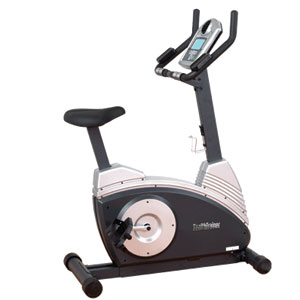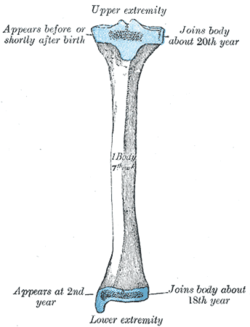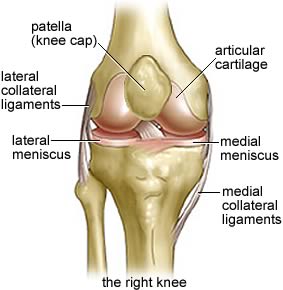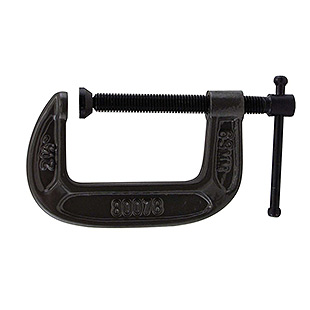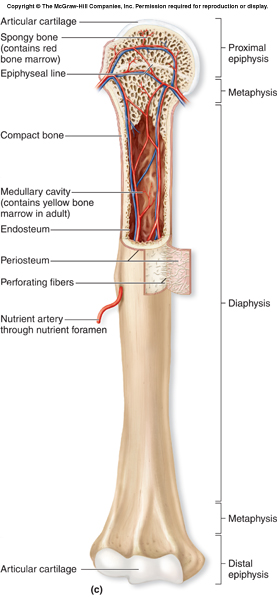[UPDATE 2: One of the contributors to the website Sugata linked me to a page from the GrowTallerInfo.com website. I have already written up this post months ago about the possibility of increasing one’s height by riding a stationary bike with an elevated seat.]
[UPDATE: There is an added new edition to this post because I managed to find new information about the possibility of increasing height and grow taller from riding a stationary bike. It was found from Sky’s old website EasyHeight.Com using the Wayback Machine. The link for the actual information is HERE. Again, I will post what he had written years ago down below here.]
Another idea that has been talked a lot about in the height increase forums is through riding a stationary bike to increase height and grow taller. Apparently, there is actually a lot of information on this idea. I feel rather lazy today so I wanted to just give a few directions and not do any of the research. (Sorry about that).
If you wanted to try using the stationary bike to add to your height increase routine, the best option is to go to the Downloads section of this website and download the E-Product books and product for free and flip to the page or section where the use of a stationary bike is talked about. Nearly all of the Books in the Download section has a section dedicated to riding a stationary bike. Please refer to those pictures and exercise routines.
The basic principle is to first ride the bike as intensely as possible. The main need there is to help release more growth hormone into your body from the sudden anaerobic exercise. Another idea is claimed by some people to help create microfractures. Then as time progresses, the bicycles handles are supposed to be put further and further away from your hip or torso so that your leg will have to “stretch” out and farther to away from your main body which would give you longer legs and increase your height. To me, it just doesn’t seem even on a superficial level to make any scientifically valid sense. I would guess that if one did manage to gain any height increase, it was because one stretched out the cartilage, but not the bone structure.
|
Biking with raised saddle seat |
| How it works: It’s believed that by raising the saddle seat of a bicycle a quarter of an inch every 2 to 3 weeks, your hip and knee cartilage (NOT the shin bone) will lengthen in order to adapt to all the stretching and pulling forces. |
| Experimented by: SkyStatistical Success Rate: Medium (Athletes) …….…………………………..Very Low (Others) – Athletes, bodybuilders, or physically active individuals tend to achieve better results than others (physically inactive) when biking with raised saddle seat.Level of Difficulty: Not Easy Duration: 6 weeks (December 19, 2003 to early February 2004) Result: Not conclusive. I did not gain any centimeter. |
| Explanation: Although a few had success with raised seat biking; this method of height increase is difficult to perform. Your legs are unlikely balanced while biking and this may cause disproportional legs. Sky and a few others tried biking with raised saddle seat but failed miserably because it’s not easy to balance their legs while sitting on the saddle seat. Also, the saddle seat always shrinks or compresses down every week due to the heavy weight of the body that exerts on it. Many believe that they’ve gained a quarter of an inch since they keep raising the saddle seat every week; when in fact, it’s actually the saddle seat shrinking down but NOT the growth in their shin bone or knee. |
| Evidence: There has NOT been any evidence or any credible success story about anyone who has grown taller by cycling with raised saddle seat. Frankly, if biking really helps to increase height, wouldn’t Lance Armstrong and his Discovery Team be the first to know? Cycling also provides great benefits for osteoarthritis sufferers. The motion of your legs and hips can actually thicken cartilage in these areas, according to research. And unlike other exercises such as jogging, biking doesn’t wear down your joints. Aim to ride for 30 to 40 minutes three to five times a week at 60 to 90 revolutions per minute (RPMs), the ideal pace for building cartilage, says Theodosakis. (Most stationary bicycles give RPM readouts; you can also buy a counter at a sporting goods store.) If this pace is too challenging, start at a more comfortable pace and quit when you’re tired. You’ll gain speed and endurance over time [FindArticles.com]. Note: There’s a success story being discussed on several height forums about by a guy named “Leo” who claimed that he grew 2.5 inches in 4 months of vigorous biking with raised saddle seat. Well, this story is bogus! |
| How to bike with raised saddle seat? Click here! |
|
1. December 19th – 26th, 2003: Biking was my very first method that I applied to grow taller. I remembered vividly that it was Christmas 2003 and the weather was so cold in Philly (USA). Everyday, I rode the bike alone with a raised saddle seat for 2-3 hours every night for 7 days straight. Back then, I did not use ankle weights. Anyway, after the first week of biking, I caught a cold, got sick, and was coughing. And worst, I lost my voice and couldn’t speak for a week. As a result, I was forced to stop the biking routine.
|
|
|
2. January 2004: One week after recovering from that wicked cold, I was a little frustrated because I honestly believed in biking with raised saddle seat. I hated Christmas 2003 and thought it was one of the worst ever! Somehow, I just kept on going. A few days later, I immediately went online to Wal-mart.com Sports & Fitness and purchased a stationary bicycle that cost $78 US. |
Marcy Magnetic Bike (from Wal-Mart) |
|
Vertically biking…….Horizontally biking |
Gradually, I discovered other methods with ankle weights. I’m wearing 10 pound ankle weight each leg while vertically stationary biking on a raised saddle seat. Also, horizontally biking is much easier than vertically biking because your legs are better balanced.
|
|
5. I customize the bicycle by pulling out the chain & removing the back tire. Then, I anchor the front tire with plastic containers, and put a chair behind the bike to transform it into a stationary bike. |
|
|
6. Later on, I found out that the saddle seat of my stationary bike was not high enough. So I customized it. Click here for more info. |
|
It has been suggested that cycling with raised saddle seat for 18 to 20 miles everyday would increase the shinbone length by 1/4 inch every 2 or 3 weeks. It’s very difficult but someone out there should experiment & report back their progress! Stationary bikes are preferred over traditional bikes because the convenience of cycling indoor regardless of weather conditions. Good stationary bikes can be found at any fitness clubs at the cost of membership subscription, or simply purchase a cheap stationary bike and then customize it as outlined below. |
|
|
|
| Tool #1: drill bit Go to your local hardware store or Home-Depot and find some drill bits.. and choose the one that fits the hole of your stationary bicycle bar.The drill bit I’m using is 11/32” (0.86 cm). It costs about $4.49 @ Ace Hardware Store. The brand is High Speed Steel. |
Tool #2: bolts & nutsYou need 4 bolts. The bolts I’m using are 5/16” x 2”. It costs about 52 cents for each @ Home Depot. Also, you need 4 nuts. The nuts I’m using are 5/16”. It costs about 96 cents for each @ Home Depot. Tool #3: bolt hub-caps |
| Tool #4: bar You need a copper, metal, or nylon bar so that you can insert inside the saddle seat bar to lengthen it. It’s very important that you must find a bar that must fit the saddle seat bar perfectly.. if it’s not perfect, the saddle seat will shake when you actually biking. |
Tool #5: Of course, you need a stationary bike.. above is the stationary bike that I purchased from Wal-mart. Click here to find out. Or, go to Yahoo.com search engine and find the one that you like. |
|
|
||
| Before: This is what the stationary bike looks like before I customize it. | After: This is what the bike looks like after I customize it. The saddle bar is now 5 inches longer than before. | |
| Step 1: First, you need to remove the saddle seat from the stationary bike. | Step 2: Cut the saddle seat in half. | |
| Step 3: Insert the copper tube in between the 2 cut-ends of the saddle bar..Note: I’m using the copper bar because it fits perfectly into the saddle bar.. you may try copper, nylon, metal, or any other bar so that it will fit the size of the saddle bar. | Step 4: Put the bicycle saddle bar on a platform and ready to drill some holes. | |
| Step 5: Then, I use the drill bit size 11/32” to drill 4 holes in between the saddle bar and the copper tube hidden inside. | Step 6: Then, get some bolts, nuts, bolt hub-caps..and tighten up the 4 holes. | |
| Step 7a: This is what the saddle bar looks like after it’s complete.. it’s now 5 inches longer than before.Note that the 4 holes that I drill go through both the saddle bar and the copper bar hidden inside. Next, I insert the bolts through both the saddle bar and the copper bar.. and I tighten them up. | Step 7b: This is the close-up zoom of the saddle bar and how bolts & nuts are tightened. | |
|
Finished product: Mission accomplished!
|
||
|
Cycling with raised seat success stories |
| Note: The following success stories are among the best out there. They sound quite credible.1) posted by: Leo When I was 23 years old I used to cycle to college which was about 10 miles away – so there and back is 20 miles in total. I read somewhere about increasing saddle height so your legs are stretched when you cycle – so it gives a slight pull on the legs. It’s bloody sore to start off with but you get used to it after a week. I done this every day for 4 months (along with plenty of protein drinks) and increased the length of my legs by over 2.5 inches – increasing saddle height 1/4 inch every few weeks. I honestly believe that any one regardless of age can achieve this and more – the legs are literally forced to grow to accommodate all that pulling and stretching.But I never see anyone else singing the praises of cycling to increase height – am I the only one? Source: http://www.gettaller.da.ru 2) posted by: Anonymous Ann’s question for anonymous: Was the height you gained in your legs permanent? How much did you gain? So simply cycling should help or are there stretches/exercises for the legs specifically that would get the same results? Anonymous’ response: Yes it was permanent. I just made sure I cycled every day and I ate a healthy diet supplemented with protein powder. I also got at least 8 hours sleep a night. I just can’t see why all you people find it so hard to increase your height – it’s easy. If you put the effort in and stay healthy then the growth will come. An interesting point is that when I cycled for just 6 to 7 miles a day not much happened but when I cycled 15 miles every day then I really noticed the increase. I used to increase the saddle height 1/4 almost every 2 weeks. Anonymous’ other post: “It was me who posted that” 3) posted by: BG 4) posted by: 5ft8guy |

